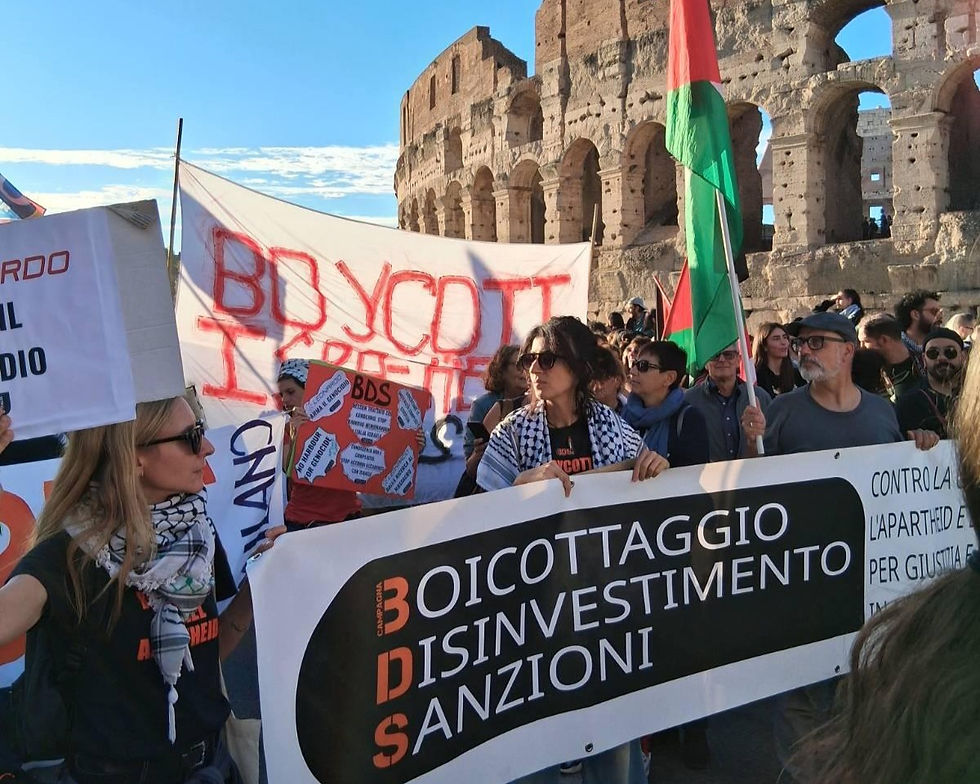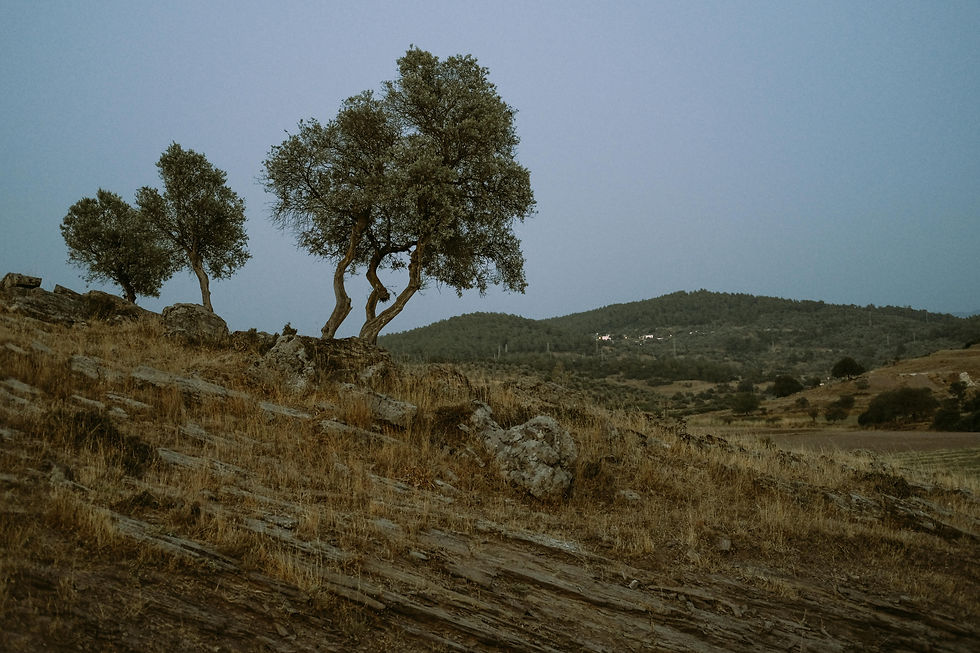Safeguarding Reimagined: Paving the Way for Transformation
- Daniel Bevan

- Mar 5, 2024
- 7 min read

Just the word ‘safeguarding’ is enough to put most aid and community development professionals to sleep. It refers to the collection of actions an organization puts in place to protect the safety, dignity, and well-being of the people it comes into contact with, specifically by preventing and responding to abuse, exploitation, and other types of harm. It's actually important. One might even say it's at the very heart of our work. But the way it's approached is often extremely problematic.
Most humanitarians and community development professionals will have attended at least a basic introduction to safeguarding in their careers, and these trainings, whether online or in person, are often quite characteristically dry. They usually signpost staff to policies, forms, recruitment, and reporting procedures, and they require all staff to have been made aware of what is expected of their behavior. A friend just sent me a screenshot of the very bland online child safeguarding course he’s required to complete at his large non-profit. It looked uninspiring, to say the least.
Having attended a number of these and, certainly, after having spoken with fellow professionals about their experience, it has been clear for some time that the priority of most organizations is covering their backs. It’s about compliance. And in today’s world, that compliance is often linked to funding opportunities such that if your entire organization has technically been made aware of the Code of Conduct and the reporting procedures, they are then eligible to apply for massive grants from governments and other donors.
Also, most of these trainings are ridiculously boring. Not least because we are never attending them to learn, grow, or challenge ourselves. We’re there to check a box.
One glance at the world news these days will deliver a shocking reminder that our work is often set in the most challenging of environments and in the most difficult of times. We are dealing with systemic violence, armed conflict, oppressive regimes, and populations in desperate need. All the evidence – and simple logic – points to the fact that these are the exact conditions when abuse, exploitation, harassment, and harm skyrocket – and yet are also underreported.
For organizations working on human rights and dignity, it’s surprising that on the whole, we don’t center our safeguarding work on the humanity of those who come into contact with our organizations. Rather, we look at it, for the most part, as ‘policy and procedure’ – part of the required infrastructure that keeps us afloat and protects us from reputational risk and snooping eyes while opening up financial opportunities associated with due diligence.
United Edge has been working to reframe the humanitarian and development narrative since 2017 with the Justice Based Approach. After talking with some safeguarding colleagues, it became immediately apparent that this approach was as relevant to safeguarding as it was to strategy and program design. So, we began trying to put together both an introduction and a deep critique of safeguarding that is centered on humanity and compassion. We called it Transformative Safeguarding, hoping that it would resonate with both safeguarding professionals and those who were joining as a matter of compliance, and we were truly blown away by people’s responses.
"It’s a transformative course that will leave you with a new perspective on many things that will benefit you on a personal and professional level." Participant from Right to Play
"It's a transformative experience in itself; it really changed the way we look at safeguarding." Participant from Save the Children
"The training was the most motivating - and energizing - experience I'd had in my professional career". Participant from Department of Service to Palestinian Refugees
"I’ve enjoyed the course a lot, really reinvigorated me in terms of safeguarding and approaches". Participant from UNFPA
"This course will help you build a larger perspective on life and is not limited to your organization's safeguarding. I would encourage everyone working in any sector be it corporate civil society or politics to just take up this course and implement these learnings in day to day life". Participant from British Asian Trust
At the time, the fact that the course was so deeply appreciated was actually slightly troubling to us. At the core of the course, we were simply trying to reframe safeguarding around our shared humanity. That was clearly revolutionary for some of our participants, including seasoned professionals – many of whom had literally never been in a space in which safeguarding focused on preventing harm to children and adults in vulnerable circumstances rather than harm to an organization’s reputation.
Instead of structuring our story of safeguarding around the different parts of the compliance system (prevent, report, respond etc.), we built our model around the five pillars of the Justice Based Approach:
Systems focused on change: Actively breaking down injustices that have been used to harm or oppress
Decisions focused on those most affected: Placing those impacted by violence and abuse at the heart of decisions and policies affecting them
Actions focused on compassion: Explicitly making compassion for life and the planet central to our work
Models focused on dignity: Building safeguarding and programmatic models that prioritize the dignity of others
Accountability focused on healing: Shifting from blame-focused approaches to accountability aimed at healing for survivors/victims, perpetrators, and society
In a world where even the most basic compliance-focused safeguarding work is so often done badly, this shift in goalposts is extremely important. We are saying that not only do we have to be better at doing the basics, but we also have to go WAY beyond and start to really consider how and why our organizations are doing, contributing to, or enabling harm.
Many organizations develop their safeguarding procedures and policies based on the requirements and templates of large donors in the Minority World (Global North). Cultural norms, local contexts, and indigenous wisdom are often overlooked in favor of Anglo- and Euro-centric concepts that prioritize “covering all the bases” over protecting the people who need it most. Our white supremacist, patriarchal, and colonial approach to safeguarding underscores the need to view the entire international aid sector through a lens of neocolonialism and power imbalance. The deep knowledge of small, superbly placed organizations on the ground — which are comprised of the very people they have a responsibility to protect — is pushed aside in favor of ‘one-size-fits-all’ policies and checklists. Yet, everyone I've spoken to who works in safeguarding emphasizes that context is everything and the key to keeping people safe. Thus, there's an inherent incompatibility between these two realities.
One key feature of Transformative Safeguarding is that it’s not about demonization. This work is not about good organizations versus bad organizations. It’s not about good people versus bad people. Most safeguarding introductions tell you that abusers can come in all shapes and sizes. Even women. Even family. But what most of them fail to tell you is that the abuser can be you.
We don’t talk about perpetrators as a dark underbelly of society. We know that all people can become abusive under the right set of circumstances. We know all people can do harm or can look away when they see harm being done. Those perpetrating abuse and harm often do so under specific conditions. They are often victims of injustices and oppressive systems. Recognizing underlying systemic factors that contribute to abuse – such as inequality, discrimination, and social norms condoning violence – is essential for long-term prevention efforts.
This means that even when abuse happens, perpetrators still retain their human rights and still deserve compassion, even when that can be challenging. While it’s easy to favor strict punitive justice for those who have harmed others or abused their power, it doesn’t get to the roots of the problem for either society or the perpetrator. Focusing on restorative and transformative justice can break the cycle – both centring the process on victims/survivors of harm and their own healing journey and also trying to create lasting change in the process. Locking people up doesn’t make the world safer.
Transformative Safeguarding is about making sure that those most impacted by harm are leading our work to prevent and respond to it. That means having their voices at the center of policy creation, as well as individual victims'/survivors' own journeys to healing, closure, and justice. Organizations have to be open to handing over the reins for that to happen, and the best way of doing so is of course to become an organization that is run and led by the people most affected by its work, shifting us from consultation to participation, from partnership to localization – and WAY beyond that, to true ownership. It is the absolute best way of keeping people safe.
Transformative Safeguarding is about building the power of a global network of practitioners dedicated to dismantling this oppression. It is a recognition that future safeguarding injustices and threats to the safety of our world need collective voices and actions to be able to solve and mitigate harm.
When we talk about harm and abuse in Transformative Safeguarding, we are not only talking about children, not even just adults in vulnerable situations. We’re talking about everyone your organization and its people have contact with. We’re talking about the legacy we leave behind to our children on the planet we call our home. We are not only talking about abuse, sexual harassment, and exploitation but a wider and deeper understanding of what we mean by harm, including the harm our programs can have on affected communities, failed projects, environmental harm, and the impact of our work culture on staff and volunteers. This is about unleashing the power of safeguarding over all that we do.
NGOs exist to have a positive impact on society and to hold society to account, and it’s the second part of that role that we really need to think about. Safeguarding should go way beyond the interests of senior management and due diligence bureaucrats at donor agencies. It’s got to be about people. And that means recognizing and acting on the fact that our organizations are also part of the societal fiber that holds up and creates injustice in the world around us. It means taking our own accountability to the next level. Rather than blaming rogue individuals or organizations, we need to recognize that harm is part of oppression which is, of course, systemic in nature. And our commitment to dismantling that oppression must be deep and unstoppable.
That’s what Transformative Safeguarding is all about.
Daniel Bevan is a co-facilitator on the Transformative Safeguarding Course and one of the co-founders and co-directors of United Edge. He is one of the original architects of the Justice Based Approach. Daniel has been working alongside children, young people, and adults in vulnerable situations for many years around the world to ensure they are safe, their voices are heard, and that they contributing to the safety and wellbeing of others and the planet.
Check out our events page for more information about the upcoming JBA Foundation Course, Transformative Safeguarding Course, and Strategic Foresight Workshop.









Comments